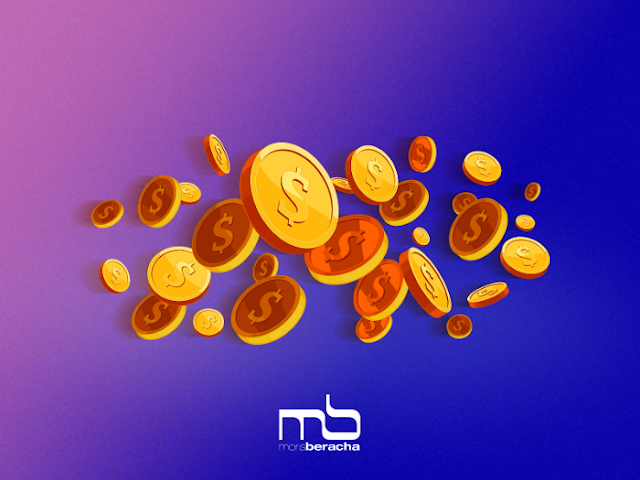Cryptocurrency Universe Expands Far Beyond Bitcoin
The code base is increasing and improving every day as computer science graduates from top schools jump on board.
By Aaron Brown
A sort of “cryptobrawl” broke out last month at the Milken Institute Global Conference between economist Nouriel Roubini and panel participants more optimistic about the future of cryptocurrency technologies. I had the opportunity to participate in a partial rematch at Battle of the Quants, where Roubini was just as negative and DMS Governance's John D’Agostino presented a moderate defense.
All of the heat concerns the border of crypto and traditional finance, but much of the important stuff is happening far from the border. For example, one of Roubini's claims is that advances in financial technology by existing financial institutions and startups are delivering on many of the promises of crypto-enthusiasts, and these will continue to transform financial markets. That’s true. However, many of those advances were spurred by the threat of crypto-competition. It’s often said that the financial industry uses 1990s technology. A better description is 19th-century paper technology with many layers of patches to automate it, but no redesign.
Roubini attributes the recent change of attitude to advances in technology, but previous advances were accepted only in minimal doses. It took credible white papers showing how the new technologies could bypass the traditional financial system entirely to spur a change of mindset. Finance has always been an information-processing business, but for the first time it’s acting like it.
Another Roubini claim is that crypto hasn’t delivered significant value except to a few criminals. True, there has been no crypto-application that has touched the lives of more than a few million people, and even then mostly in areas that are either silly or circular, or that facilitate controversial peer-to-peer transactions. Although I think it will be five years before crypto is a significant part of a hundred million people’s lives, it has already caused change by liberalizing attitudes toward transactions that both buyer and seller desire. (Full disclosure: I own Bitcoin and other cryptocurrencies.)
I claim grudging agreement from Roubini on my big point. 1 There’s a crypto-universe unrelated to the dollar price of Bitcoin. The code base is increasing and improving every day. The flow of top developers is still strongly out of traditional tech and into crypto. Computer science graduates from top schools are signing onto crypto because they find more fulfillment changing the world than hoarding other people’s data and selling ads. 2 Add to that enormous contributions from open-source developers who are pure altruists.
So what’s the problem? We have a bunch of technophiles slaving away on a speculative vision of the future, which most of us don’t understand well, but whose potential is causing financial regulators and institutions to up their games. That’s all good, whether crypto causes a social revolution or never progresses beyond vaporware and a few niche applications. The problems crop up when crypotcurrencies get exchanged for dollars. This has led to fraud, flouting of securities laws, delusional promotions, boom and bust. 3 Roubini thinks that’s all it has led to, but I think that beneath the fuss there has been slow and thoughtful progress toward peaceful coexistence of crypto and traditional finance.
One possibility is that the crypto-universe will run independently of traditional finance, but that would require it to become self-sustaining, and it’s nowhere close to that happening. Another possibility is that a method of exchange will evolve that brings in enough dollars to pay developers and electricity bills, but avoids fraud and allows the vast majority of crypto to circulate for its intended purpose rather than be hoarded or dumped based on its dollar price fluctuations.
Should you invest in crypto? For Roubini, the answer is a resounding no. For D’Agostino, it’s dangerous but careful investors can find attractive situations. I think it’s appropriate for 0.5 percent to 5 percent 4 of one’s portfolio, but only for those willing to take returns in the things they will be able to purchase with crypto. Buying crypto is like buying a residence. It might or might not make you money in dollar terms, but if you’re happy living there — taking your return in the asset itself rather than its value — it can be an unbeatable investment.
Published in: https://www.bloomberg.com/




Drawing trend lines is one of the few easy techniques that really WORK. Prices respect a trend line, or break through it resulting in a massive move. Drawing good trend lines is the MOST REWARDING skill.
ResponderEliminarThe problem is, as you may have already experienced, too many false breakouts. You see trend lines everywhere, however not all trend lines should be considered. You have to distinguish between STRONG and WEAK trend lines.
One good guideline is that a strong trend line should have AT LEAST THREE touching points. Trend lines with more than four touching points are MONSTER trend lines and you should be always prepared for the massive breakout!
This sophisticated software automatically draws only the strongest trend lines and recognizes the most reliable chart patterns formed by trend lines...
http://www.forextrendy.com?kdhfhs93874
Chart patterns such as "Triangles, Flags and Wedges" are price formations that will provide you with consistent profits.
Before the age of computing power, the professionals used to analyze every single chart to search for chart patterns. This kind of analysis was very time consuming, but it was worth it. Now it's time to use powerful dedicated computers that will do the job for you:
http://www.forextrendy.com?kdhfhs93874